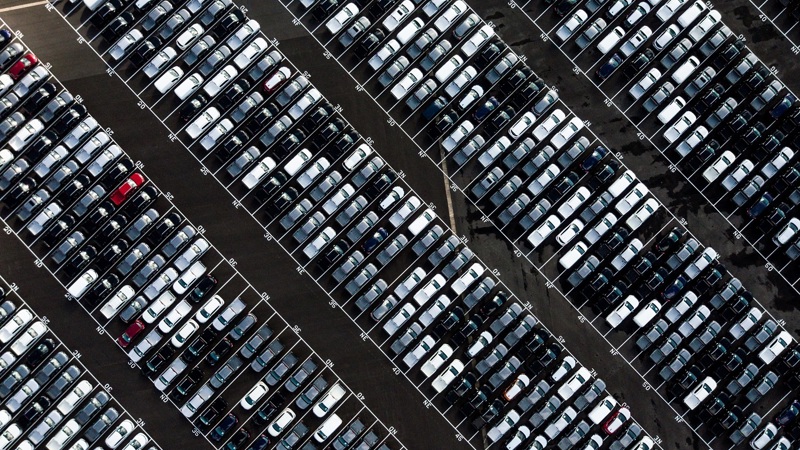
A trio of government schemes aimed at supporting the UK to shift to zero emission cars and vans has successfully spurred demand for electric vehicles (EVs) and chargepoints, particularly home installations, both through direct price subsidy and through their contribution to market-building.
But while there has been a considerable increase in demand for electric cars, the electric van market remains at an early stage of development and the impact of these schemes on investment in EV manufacturing has been limited.
Those are the main conclusions of a rapid evaluation of the schemes by Frontier Economics for the Department for Transport (DfT) published earlier this year. The Department commissioned the report as part of a broader effort to embed evaluation into its policy development cycle as the UK pursues its goal to end the sale of new petrol and diesel cars and vans by 2030.
What we looked at
The Office for Zero Emission Vehicles (OZEV) is a team working across the DfT and the Department for Business, Energy & Industrial Strategy (BEIS) with overall responsibility for meeting the 2030 goal.
DfT asked us to evaluate three schemes within OZEV’s overall grant portfolio:
- The Plug-in Vehicle Grant (PIG) for cars and vans. The aim is to reduce the purchase price differential between new low/zero emission vehicles and internal combustion engine (ICE) vehicles. We evaluated grants awarded from 2011 to 2021. Total grant spending was about £1.36bn on cars and £150m on vans.
- The Electric Vehicle Homecharge Scheme (EVHS). The purpose is to lower the upfront cost of buying and installing EV chargepoints in homes with dedicated off-street parking. Spending on the programme from its start in September 2014 was around £100m as at the end of 2021.
- The Workplace Charging Scheme (WCS). The goal is to reduce the upfront cost of putting in EV chargepoints at businesses, charities and public sector organisations. Spending on the WCS from its start in November 2016 was around £9m as at the end of 2021.
A word of caution
In conducting our evaluation, we faced some limitations in the monitoring and baseline data available. Moreover, the limited time available to us ruled out gathering extensive primary data, for example through surveys of market participants.
As a result, we adopted a theory-based approach involving qualitative analysis of interviews with market experts and stakeholders that focused on the impact of the grant schemes. This was complemented by quantitative analysis of the relationship between observable market trends and the OZEV grants, with estimation of attributable impacts where feasible.
However, the EV market is highly complex, with outcomes driven by a large range of factors of which the OZEV portfolio is only one. The EV market is also affected by broader government policy such as company car tax benefits for low emission vehicles, CO2 regulation and BEIS support for innovative automotive and battery technology. Other factors include fuel prices, general consumer sentiment and the implications for UK vehicle manufacturers of policy support for EVs in other countries. All this makes it difficult to pin down the direct impact of the grants being evaluated.
What we found
Cars
Bearing in mind the caveats outlined above, key stakeholders in the sale and manufacturing of EVs indicated that the OZEV grants have had an important impact in generating demand for electric cars.
At the start of the car plug-in grant scheme in 2011, OZEV projected that EVs would account for 5% of new car registrations by 2020. In the event, they had reached almost 20% by Q3 2021.
Based on the number of registrations, grant value as a proportion of price and evidence on the price elasticity of demand for EVs, the additional electric car demand attributable solely to the reduction in purchase price provided by the PICG is estimated to have been 90,000 between 2011 and 2021. Note that this estimate does not include any of the wider market-building impacts of the OZEV grants or their network or signalling effects.
Stakeholders also said that price, whilst still important, has become a less important determinant of demand for electric cars as the market has matured, with charging becoming an increasingly prominent concern.
In a telling sign of the impact of the grant scheme, we found that after eligibility was restricted to battery electric vehicles (BEVs) in October 2018, demand shifted noticeably away from Plug-in Hybrid Electric Vehicles (PHEVs) and towards BEVs.
Vans
In contrast to electric cars, new EV van registrations have not met OZEV’s original projections. Fleet experts suggest that the low uptake is down to product limitations and report the plug-in grant for vans is becoming increasingly important as electric vans become viable. Price remains a more significant barrier to electric van uptake.
EV charging
We found that increasing the availability of charging infrastructure – particularly at home – is an important part of developing the market for EVs. The number of EVHS-funded chargepoints has continued to rise even as the maximum value of the grant has fallen, illustrating strong uptake of the grant.
However, the workplace charging scheme appears to have been less effective so far. Stakeholders suggested this may be due low awareness coupled with the fact that the grants, by design, are not suited for large fleet charging.
Manufacturing
It is difficult to attribute growth in UK EV manufacturing directly to the grant schemes, and the overall impact on investment in manufacturing is limited. EV and battery manufacturing experts said other factors such as business rates and overall long-term government strategy are far more significant drivers of investment than the market mechanisms in the OZEV portfolio.
However, some stakeholders said the schemes may have contributed to securing the supply of EVs to the UK. Plus, the EVHS and WCS grants have served the purpose of guaranteeing the safety and quality of chargepoints.
The environment
Depending on assumptions about EV demand being attributable to the OZEV grants, the overall impact on the environment of getting people to switch more quickly to EVs is significant. A BEV emits about six tonnes less CO2e than an average internal combustion vehicle over its lifetime.
If we assume that the grants resulted in additional demand equal to 10% of all eligible car purchases between 2011 and 2021, this implies the abatement of about 193,400 tonnes CO2e of greenhouse gases. And assuming the grants sparked extra demand equal to 30% of all eligible car purchases over the same time period, the implied abatement is about 580,300 tonnes.
Areas for consideration
We spoke with a range of market experts and industry bodies who provided views informing the evaluation, focusing on those who we felt would offer the broadest perspective on the key questions. The interviews highlighted some consistent points highlighting areas for future policy exploration, including:
- Increased signalling of circumstances under which grant schemes might change could improve confidence and certainty in the market.
- Significant barriers to uptake remain in important segments of the market, particularly used vehicles and van fleets, where ongoing support is needed as markets continue to mature.
- It is important for the government to send consistent policy signals about support for both the demand and supply sides of the EV market.
- OZEV should consider wider supply-side factors when making changes to the grants. In particular, its portfolio may remain important for ensuring product availability in the UK due to supply constraints.
- It is important for schemes to be as simple as possible to engage with to help ease the burden on suppliers and help bring new products to market.
Conclusion
The objective of the OZEV portfolio is to help build a self-sustaining market for zero-emission vehicles. The complexity of the fast-evolving EV market makes it hard to quantify the impact of the OZEV schemes. However, we found that the grants have had a material impact on demand for new EVs and charging installations in the UK, particularly for cars and home chargepoints. Increasingly, consumers worry more about their ability to charge EVs than about the upfront purchase price.
OZEV’s grants may have played a role in securing the supply of EVs to the UK and may also have served to provide additional quality and safety standards for the chargepoint market.
A more robust monitoring and evaluation framework is needed to better assess the contribution of government initiatives to the phase-in of EVs and to mitigate the data limitations that hampered the analysis underpinning our report. We worked closely with OZEV to help them improve their capability around monitoring and evaluation to help improve the future evidence base.





